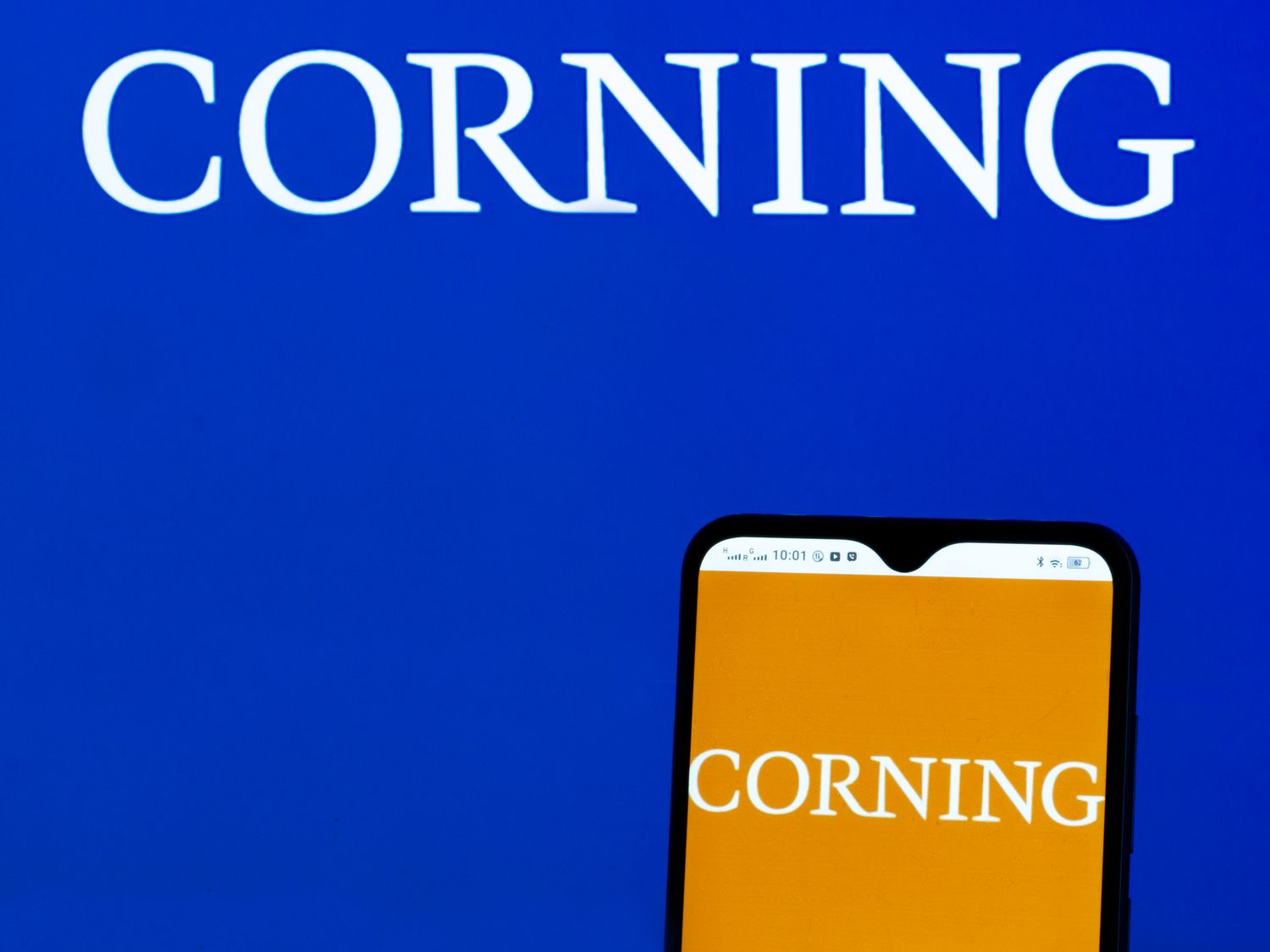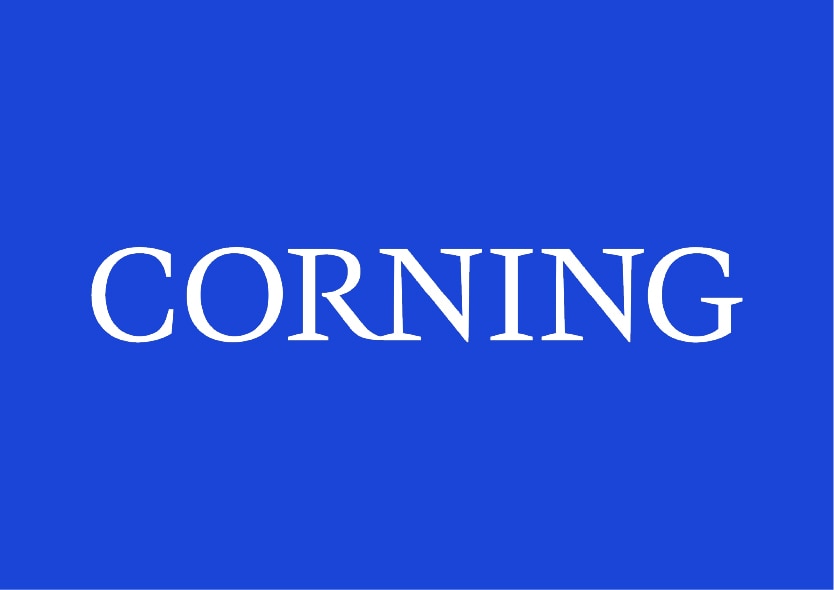Corning Surges As AI Demand Boosts Revenue And Margins

Corning (NYSE:GLW) posted second-quarter earnings that beat estimates, fueled by strong demand for products used in artificial intelligence infrastructure, sending shares up 12% in intra-day trading.
The company reported core earnings per share of $0.60, ahead of analysts' forecast of $0.57. Revenue climbed to $4.05 billion, surpassing the $3.86 billion consensus and reflecting 12% year-over-year growth.
Core operating margin expanded 160 basis points to 19%, while core EPS rose 28% from the year-ago period. Free cash flow jumped 28% to $451 million.
Corning’s Optical Communications unit led the way, with sales surging 41% to $1.57 billion. Within that, Enterprise sales jumped 81%, driven by sustained demand for next-generation AI solutions.
Looking ahead, Corning projected third-quarter core sales of $4.2 billion and core EPS between $0.63 and $0.67. The outlook includes modest impacts from tariffs and elevated costs tied to scaling production for AI and U.S.-based solar products.
| Symbol | Price | %chg |
|---|---|---|
| 006400.KS | 325000 | -3.85 |
| 006405.KS | 180800 | -4.37 |
| 009150.KS | 229500 | -4.14 |
| 009155.KS | 103200 | -2.91 |

Corning Incorporated (NYSE: GLW) Sees Upward Trend in Price Target
- Analysts have raised Corning's consensus price target over the past year, indicating growing optimism about the company's financial outlook.
- Significant growth is expected in Corning's Optical and Specialty Materials segments, driving positive sentiment among analysts.
- Corning has a history of surpassing earnings expectations, suggesting potential for an earnings beat in its upcoming report.
Corning Incorporated (NYSE: GLW) is a leading innovator in materials science, specializing in glass, ceramics, and optical physics. The company operates in various segments, including display technologies, optical communications, and specialty materials. Corning's competitors include companies like 3M and AGC Inc., which also operate in the materials and technology sectors.
Corning's consensus price target has shown a notable upward trend over the past year. Last month, the average price target was $82.50, reflecting positive sentiment among analysts. This optimism is supported by expectations of growth in Corning's Optical and Specialty Materials segments, as highlighted by Zacks. These segments are anticipated to enhance the company's earnings performance, driven by significant partnerships within the technology sector.
Three months ago, the average price target was $77.13, indicating a steady increase in analysts' expectations. This reflects confidence in Corning's business segments and market position. The company is believed to have the right combination of factors that could lead to an earnings beat in its upcoming report.
A year ago, the average price target was $67.27, showing a significant rise to the current target. This suggests that analysts have become increasingly optimistic about Corning's prospects. The company has a strong track record of surpassing earnings expectations, as highlighted by Zacks. Corning is well-positioned to potentially exceed estimates in its upcoming quarterly report, making it a noteworthy candidate for investors.
Overall, the upward trend in the consensus price target over the past year indicates growing confidence in Corning's ability to capitalize on its diverse business operations and market opportunities. Investors may want to consider these insights when evaluating Corning's stock potential, especially with the anticipated performance in upcoming quarterly earnings.

Corning Incorporated (NYSE:GLW) Overview: A Tech Innovator with a Stable Outlook
- The current consensus target price for Corning Incorporated (NYSE:GLW) is $59, indicating a stable outlook from analysts.
- Despite positive trends, analyst Martin Yang from Oppenheimer sets a lower price target of $48 due to potential margin pressures.
- Corning's strategic initiatives and partnerships position it for future growth, though valuation and dividend payout ratios present risks.
Corning Incorporated (NYSE:GLW) is a leading technology company known for its innovations in glass and ceramics. It operates in various segments, including Display Technologies, Optical Communications, Specialty Materials, Environmental Technologies, and Life Sciences. Corning's products are essential in industries ranging from consumer electronics to life sciences, making it a key player in the tech industry.
The current consensus target price for Corning is $59, reflecting a stable outlook from analysts over the past month and quarter. This stability suggests confidence in Corning's business performance, particularly in its Optical Communications segment, which has shown strong results. Despite this, analyst Martin Yang from Oppenheimer has set a lower price target of $48, indicating caution due to potential margin pressures and high market expectations.
Over the past year, the consensus target price for Corning has increased from $52.38 to $59. This positive shift in analysts' outlook may be due to Corning's strategic initiatives, such as Project Springboard, which aims to capitalize on growth opportunities in fiber optics, AI, and solar energy. The company's recent financial results have highlighted double-digit revenue growth and margin expansion, driven by increased demand for optical communications.
Despite the positive outlook, Corning faces challenges such as tariff headwinds and high valuations, which could lead to stock corrections if earnings fall short. Historically, the stock has experienced negative one-day returns following earnings announcements in 60% of cases over the past five years. This suggests that investors should remain cautious and monitor upcoming earnings reports and market trends closely.
Corning's strategic partnerships with industry giants like Broadcom and Apple, along with its integration of AI into operations, position the company for future growth. However, concerns about its valuation and high dividend payout ratio present potential risks. Nonetheless, Corning's diversified business model and increasing free cash flow provide resilience, supporting its long-term revenue potential.

Corning Incorporated (NYSE:GLW) Overview and Price Target Fluctuations
- The consensus price target for Corning Incorporated (NYSE:GLW) has seen fluctuations, recently adjusted to $52 by Mizuho analyst John Roberts.
- Corning's strategic initiatives, including the "Springboard" plan, aim for accelerated revenue growth and a 20% operating margin, showcasing the company's strong financial health and resilience.
- Despite a recent 12% decline in stock value, optimism remains high among analysts, with a potential trend reversal indicated by the stock entering oversold territory.
Corning Incorporated (NYSE:GLW) is a diversified technology company with a rich history dating back to 1851. Headquartered in Corning, New York, the company operates across several segments, including display technologies, optical communications, environmental technologies, specialty materials, and life sciences. Corning's broad product range and strategic initiatives position it as a key player in the technology sector.
The consensus price target for Corning has experienced fluctuations over the past year. A year ago, the target was $48.5, reflecting a conservative outlook. This increased to $56 last quarter, indicating optimism about the company's prospects. However, the target has recently decreased to $52, as highlighted by Mizuho analyst John Roberts, who revised his target from $58 to $52, maintaining an Outperform rating.
Several factors could influence these changes in price targets. Market conditions, such as recent reductions in market multiples, play a role. Despite these changes, Mizuho has only slightly reduced forward year estimates, as they do not anticipate a recession. Additionally, lower oil prices could impact the gas-linked cost advantage for basic chemical stocks, affecting Corning's performance.
Corning's strategic initiatives, like the "Springboard" plan, aim to accelerate revenue growth and achieve a 20% operating margin. The company's financial health remains strong, with controlled costs, robust EBITDA, and a moderate debt burden. These factors support ongoing investments and shareholder returns, contributing to the company's resilience in a fluctuating market.
Despite a recent 12% decline in stock value, Corning is now in oversold territory, suggesting a potential trend reversal. Analyst Martin Yang from Oppenheimer has set a price target of $48, reflecting confidence in Corning's ability to surpass earnings expectations. This optimism is supported by a strong consensus among Wall Street analysts to raise earnings estimates, indicating a positive outlook for Corning's future performance.

Corning Incorporated (NYSE:GLW) Overview and Price Target Fluctuations
- The consensus price target for Corning Incorporated (NYSE:GLW) has seen fluctuations, recently adjusted to $52 by Mizuho analyst John Roberts.
- Corning's strategic initiatives, including the "Springboard" plan, aim for accelerated revenue growth and a 20% operating margin, showcasing the company's strong financial health and resilience.
- Despite a recent 12% decline in stock value, optimism remains high among analysts, with a potential trend reversal indicated by the stock entering oversold territory.
Corning Incorporated (NYSE:GLW) is a diversified technology company with a rich history dating back to 1851. Headquartered in Corning, New York, the company operates across several segments, including display technologies, optical communications, environmental technologies, specialty materials, and life sciences. Corning's broad product range and strategic initiatives position it as a key player in the technology sector.
The consensus price target for Corning has experienced fluctuations over the past year. A year ago, the target was $48.5, reflecting a conservative outlook. This increased to $56 last quarter, indicating optimism about the company's prospects. However, the target has recently decreased to $52, as highlighted by Mizuho analyst John Roberts, who revised his target from $58 to $52, maintaining an Outperform rating.
Several factors could influence these changes in price targets. Market conditions, such as recent reductions in market multiples, play a role. Despite these changes, Mizuho has only slightly reduced forward year estimates, as they do not anticipate a recession. Additionally, lower oil prices could impact the gas-linked cost advantage for basic chemical stocks, affecting Corning's performance.
Corning's strategic initiatives, like the "Springboard" plan, aim to accelerate revenue growth and achieve a 20% operating margin. The company's financial health remains strong, with controlled costs, robust EBITDA, and a moderate debt burden. These factors support ongoing investments and shareholder returns, contributing to the company's resilience in a fluctuating market.
Despite a recent 12% decline in stock value, Corning is now in oversold territory, suggesting a potential trend reversal. Analyst Martin Yang from Oppenheimer has set a price target of $48, reflecting confidence in Corning's ability to surpass earnings expectations. This optimism is supported by a strong consensus among Wall Street analysts to raise earnings estimates, indicating a positive outlook for Corning's future performance.

Corning Incorporated's Upcoming Earnings and Financial Health
- Earnings Expectations: Wall Street anticipates an EPS of $0.50 and revenue of $3.63 billion for the upcoming quarter.
- Product Innovation: The introduction of Gorilla Armor 2 for Samsung’s Galaxy S25 Ultra showcases Corning's focus on innovation.
- Financial Metrics: Corning's financial ratios, such as a P/E ratio of 77.01 and a debt-to-equity ratio of 0.76, highlight its market position and financial health.
Corning Incorporated, listed as NYSE:GLW, is a leading innovator in materials science, specializing in glass, ceramics, and optical physics. The company is set to release its quarterly earnings on April 29, 2025. Wall Street expects earnings per share to be $0.50, with projected revenue of around $3.63 billion. Corning's focus on innovation and partnerships with major tech companies like Samsung Electronics has been pivotal in its growth.
Corning is expected to show year-over-year revenue growth, driven by strong momentum across multiple segments. The company has consistently exceeded earnings expectations, with an average surprise of 3.34% over the last four quarters. In the most recent quarter, Corning reported a 1.79% earnings surprise, highlighting its ability to outperform market predictions.
A significant contributor to Corning's growth is its focus on product innovation, particularly in the realm of artificial intelligence. Samsung Electronics, the world's second-largest smartphone manufacturer, has chosen Corning’s Gorilla Armor 2 for its Galaxy S25 Ultra devices. This product is the industry's first scratch-resistant, anti-reflective glass ceramic cover material, enhancing display contrast by reducing surface reflections.
Corning's financial metrics provide insight into its market position. The company has a price-to-earnings (P/E) ratio of approximately 77.01, indicating that investors are willing to pay $77.01 for every dollar of earnings. Its price-to-sales ratio is about 2.89, suggesting that investors are paying $2.89 for every dollar of sales. The enterprise value to sales ratio is approximately 3.37, reflecting the company's total valuation relative to its sales.
The enterprise value to operating cash flow ratio is around 22.78, indicating the company's valuation in relation to its cash flow from operations. Corning's earnings yield is approximately 1.30%, representing the percentage of each dollar invested that was earned by the company. The debt-to-equity ratio is about 0.76, showing the proportion of debt to shareholders' equity. Lastly, Corning has a current ratio of approximately 1.62, indicating its ability to cover short-term liabilities with short-term assets.

Corning Incorporated's Upcoming Earnings and Financial Health
- Earnings Expectations: Wall Street anticipates an EPS of $0.50 and revenue of $3.63 billion for the upcoming quarter.
- Product Innovation: The introduction of Gorilla Armor 2 for Samsung’s Galaxy S25 Ultra showcases Corning's focus on innovation.
- Financial Metrics: Corning's financial ratios, such as a P/E ratio of 77.01 and a debt-to-equity ratio of 0.76, highlight its market position and financial health.
Corning Incorporated, listed as NYSE:GLW, is a leading innovator in materials science, specializing in glass, ceramics, and optical physics. The company is set to release its quarterly earnings on April 29, 2025. Wall Street expects earnings per share to be $0.50, with projected revenue of around $3.63 billion. Corning's focus on innovation and partnerships with major tech companies like Samsung Electronics has been pivotal in its growth.
Corning is expected to show year-over-year revenue growth, driven by strong momentum across multiple segments. The company has consistently exceeded earnings expectations, with an average surprise of 3.34% over the last four quarters. In the most recent quarter, Corning reported a 1.79% earnings surprise, highlighting its ability to outperform market predictions.
A significant contributor to Corning's growth is its focus on product innovation, particularly in the realm of artificial intelligence. Samsung Electronics, the world's second-largest smartphone manufacturer, has chosen Corning’s Gorilla Armor 2 for its Galaxy S25 Ultra devices. This product is the industry's first scratch-resistant, anti-reflective glass ceramic cover material, enhancing display contrast by reducing surface reflections.
Corning's financial metrics provide insight into its market position. The company has a price-to-earnings (P/E) ratio of approximately 77.01, indicating that investors are willing to pay $77.01 for every dollar of earnings. Its price-to-sales ratio is about 2.89, suggesting that investors are paying $2.89 for every dollar of sales. The enterprise value to sales ratio is approximately 3.37, reflecting the company's total valuation relative to its sales.
The enterprise value to operating cash flow ratio is around 22.78, indicating the company's valuation in relation to its cash flow from operations. Corning's earnings yield is approximately 1.30%, representing the percentage of each dollar invested that was earned by the company. The debt-to-equity ratio is about 0.76, showing the proportion of debt to shareholders' equity. Lastly, Corning has a current ratio of approximately 1.62, indicating its ability to cover short-term liabilities with short-term assets.







